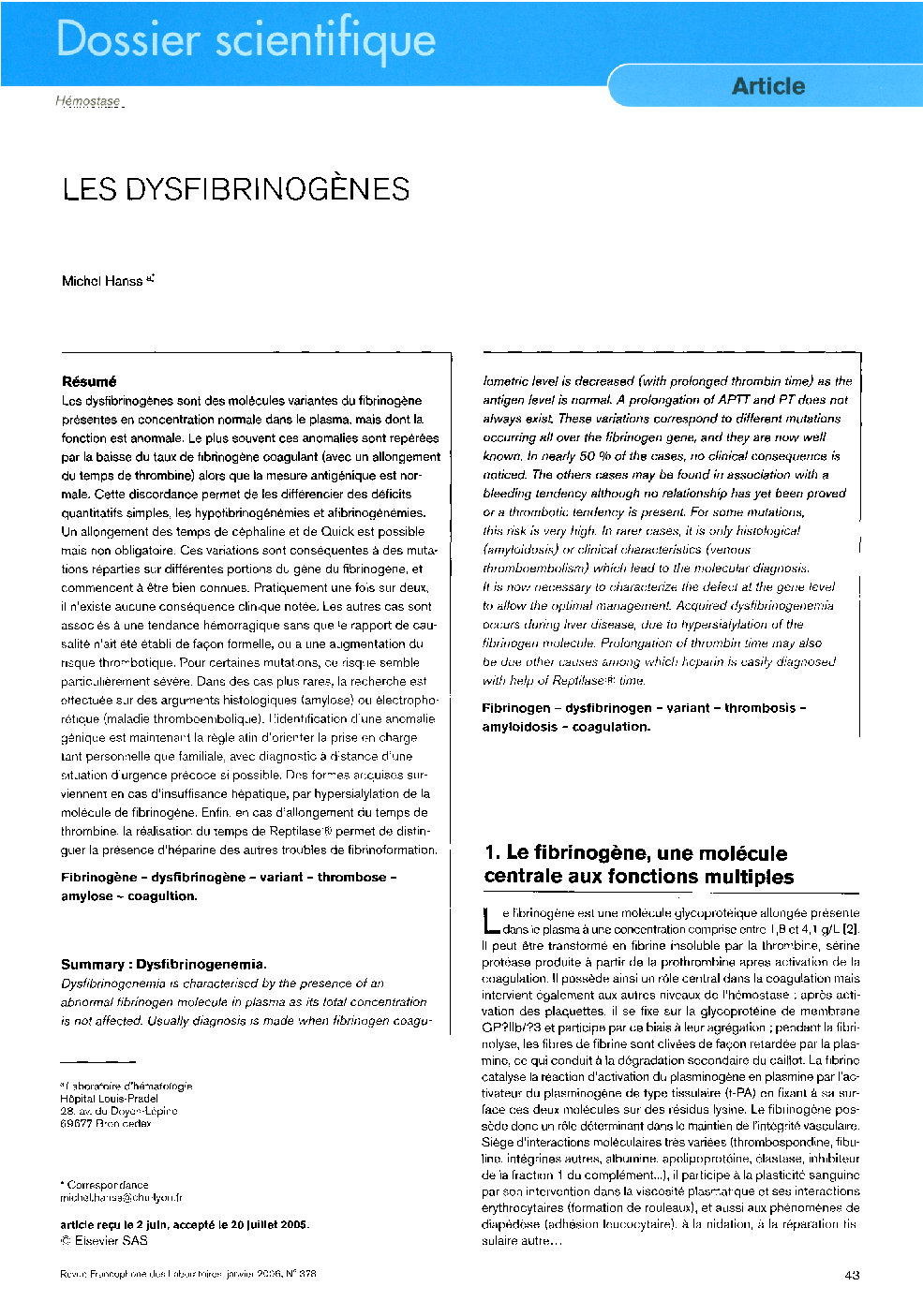| Article ID | Journal | Published Year | Pages | File Type |
|---|---|---|---|---|
| 7666815 | Revue Francophone des Laboratoires | 2006 | 6 Pages |
Abstract
Dysfibrinogenemia is characterised by the presence of an abnormal fibrinogen molecule in plasma as its total concentration is not affected. Usually diagnosis is made when fibrinogen coagulometric level is decreased (with prolonged thrombin time) as the antigen level is normal. A prolongation of APTT and PT does not always exist. These variations correspond to different mutations occurring all over the fibrinogen gene, and they are now well known. In nearly 50% of the cases, no clinical consequence is noticed. The others cases may be found in association with a bleeding tendency although no relationship has yet been proved or a thrombotic tendency is present. For some mutations, this risk is very high. In rarer cases, it is only histological (amyloidosis) or clinical characteristics (venous thromboembolism) which lead to the molecular diagnosis. It is now necessary to characterize the defect at the gene level to allow the optimal management. Acquired dysfibrinogenemia occurs during liver disease, due to hypersialylation of the fibrinogen molecule. Prolongation of thrombin time may also be due other causes among which heparin is easily diagnosed with help of Reptilase® time.
Related Topics
Physical Sciences and Engineering
Chemistry
Analytical Chemistry
Authors
Michel Hanss,
